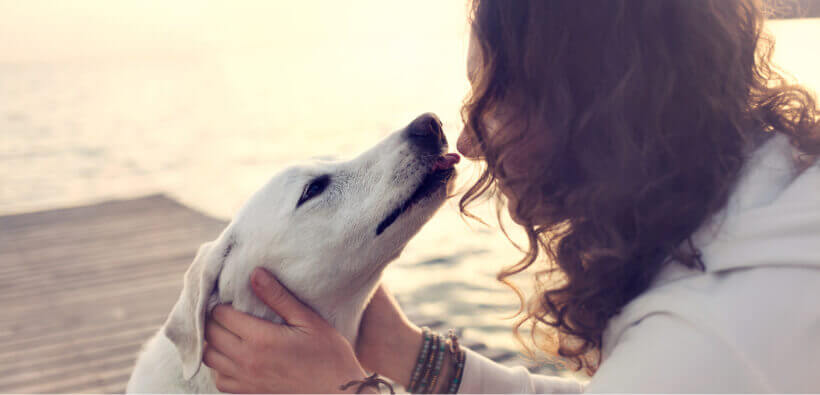How to Plan for Your Pet’s Safety Ahead of a Major Weather Event

As pet owners, most of you consider your animals to be part of your family. A safe, loving environment, regular meals, and a warm bed are just as important to your pet as they are to you. And, because you care about your pet, you may want to give some advance thought to how you’ll care for them during and after a disastrous storm or other event.
Emergency family plan
While the majority of us would rather not think about such things as disasters, having an emergency family plan to include your dog or cat makes a lot of sense. Keeping them comfortable and safe can make it easier for you to deal with their anxiety as well as yours.
Below are some valuable emergency planning tips for families with pets courtesy of Ready.com:
- Prepare your pet for an emergency

- Keep an ID on your pet
This should include your home address and/or phone number on a tag attached to your pet’s collar. Many states require pets to have a microchip implanted in case the tags fall off. If your pet doesn’t have one, you may want to consider having it done.
- Have a current or recent photo of your pet on hand
Should it become necessary to identify your pet in the event the tags are lost and no microchip is available, take a photo of your pet to show around. You can print them ahead of time to create a “lost pet” flyer. Or, use your cellphone to share the photo on social media.
- Identify shelters or pet-friendly hotels
Do a little research ahead of an unforeseen disaster by listing the phone numbers and addresses of local shelters, boarding facilities and pet-friendly hotels where you can stay or drop off your pet in an emergency.
- Security a priority
When disaster strikes, pets can panic and run away. If you anticipate a serious weather event, you may want to keep a secure pet carrier, crate or harness so your pet can be controlled and stay safe.
- Pet emergency kit
Just as you should have an emergency kit for your family, your pet should have his own emergency supply kit. Store several cans of moist dog food to reduce the need for water along with blankets, bottled water, pet first-aid supplies, veterinary records, medications, an extra collar and leash, food dishes and other pet-specific supplies, such as cat litter.
- Create a buddy plan
In other words, talk with your friends and neighbors to set up a buddy plan to care for each other’s pets in case of an emergency. That way, should disaster strike, and one person isn’t home, another can take in the animals to keep them safe until the owner returns. Decide on a specific meeting place to join up after an evacuation or following the event.
Tending to your pets’ needs during a disaster
You’ll have to be a good pet parent and tend to your pets’ many needs during a disaster. It will be a trying time for both of you, so:
- Don’t leave pets outside or tied up
Not only is this unsafe for your pet, but they may become frightened and run off.
- Separate your dogs, cats, and other animals
Regardless of how well they normally get along, when situations become stressful, your pets can behave irrationally.
- Unique pets, such as birds
Every pet has specific needs in emergencies. Discuss this with your veterinarian so you know what to expect.
- Don’t leave your pet behind if you have to evacuate
If at all possible, avoid leaving your animals behind. Should you be forced to evacuate and you can’t take them with you, try to leave them with plenty of food and water, even if it means leaving the toilet seat up so they have access to water.
Your homeowners insurance or renters insurance can protect your home or apartment. But, by planning ahead, you can also help protect yourself and your pet in an emergency.


